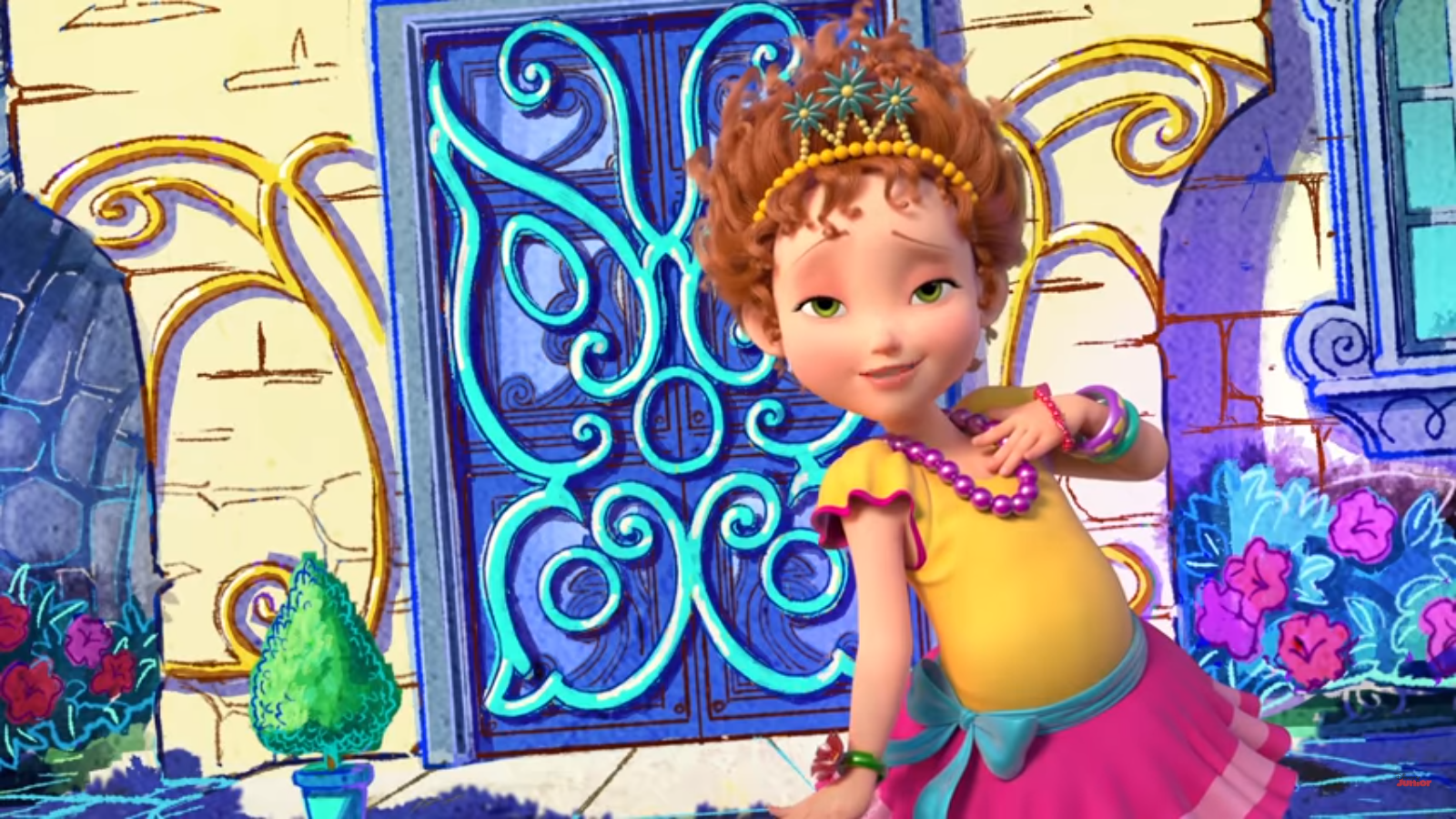I’m not sure what kind of review this is going to be because I haven’t decided yet what I think of this show. I hated it at first, and then it grew on me.
Under discussion here is Fancy Nancy, a show on Disney Junior. I need to give a little background in case you’re wondering why I’m talking about a CGI Disney Junior show on a blog largely dedicated to magical girls and other weebery.
To put this in terms that my fellow weeaboos can appreciate, it goes like this: Have you read Yotsuba&!? And did you like it? Well, there are a whole bunch of books just like it in the kid lit section at your public library.

In fact, I would recommend that serious anime fans explore some of the chapter books and junior novels at the library, mostly just to find out what they’re missing. American writers of children’s literature give the impression of being people who’ve actually observed children closely before attempting to impersonate them on paper, whereas Japanese creators of manga and anime give the impression of being people who’ve heard rumors of children but have never actually seen any. The next time somebody asks me to justify why I think Cardcaptor Sakura or Lyrical Nanoha is poorly written, I think I’ll just wave a Judy Moody under his nose and say, “Here! Read this! Then you’ll understand!”

Anyway, as I’ve mentioned previously, I became a fan of the Fancy Nancy series of picture books by accident. One of my two jobs while going through grad school was in a public library; there, the oversized and colorful Fancy Nancy picture books stood out from the pack, and were frequently on the reshelving cart—meaning that they circulated a lot. Curious, I picked one up one day and was instantly hooked. My first thought, of course, was that Nancy would make a good magical girl, but never mind that; she’s a great character in her own right even without magic powers.
And I’m clearly not the only one who thinks so. In the world of picture books, Fancy Nancy is the equivalent of a mega-franchise, having over eighty titles and several bestsellers. Now that Disney has its hooks in, there are also toys—lots and lots of toys—and of course the animated series, which will be our main subject of discussion here.

Reading a few of the Fancy Nancy titles, it’s not hard to see what the fuss is. The books in the main line (that is, those by the original author, Jane O’Connor, and original illustrator, Robin Preiss Glasser) have the same timeless feel as classics like Alexander and the Terrible, Horrible, No Good, Very Bad Day or other picture books adults can enjoy as well as children. The stories are simple, but have undertones that only older readers are likely to pick up on; the children can join Nancy on her misadventures or learn from her copious vocabulary, and grownups can as well—but grownups can also laugh at her (briefly and gently, of course) when she is repeatedly hoist on the petard of her own exuberance. Nancy is at once both larger than life and as realistic as your next-door-neighbor’s kid, and after reading one of these books, you may come away with the feeling that you’ve actually met somebody, and not merely read about a character.
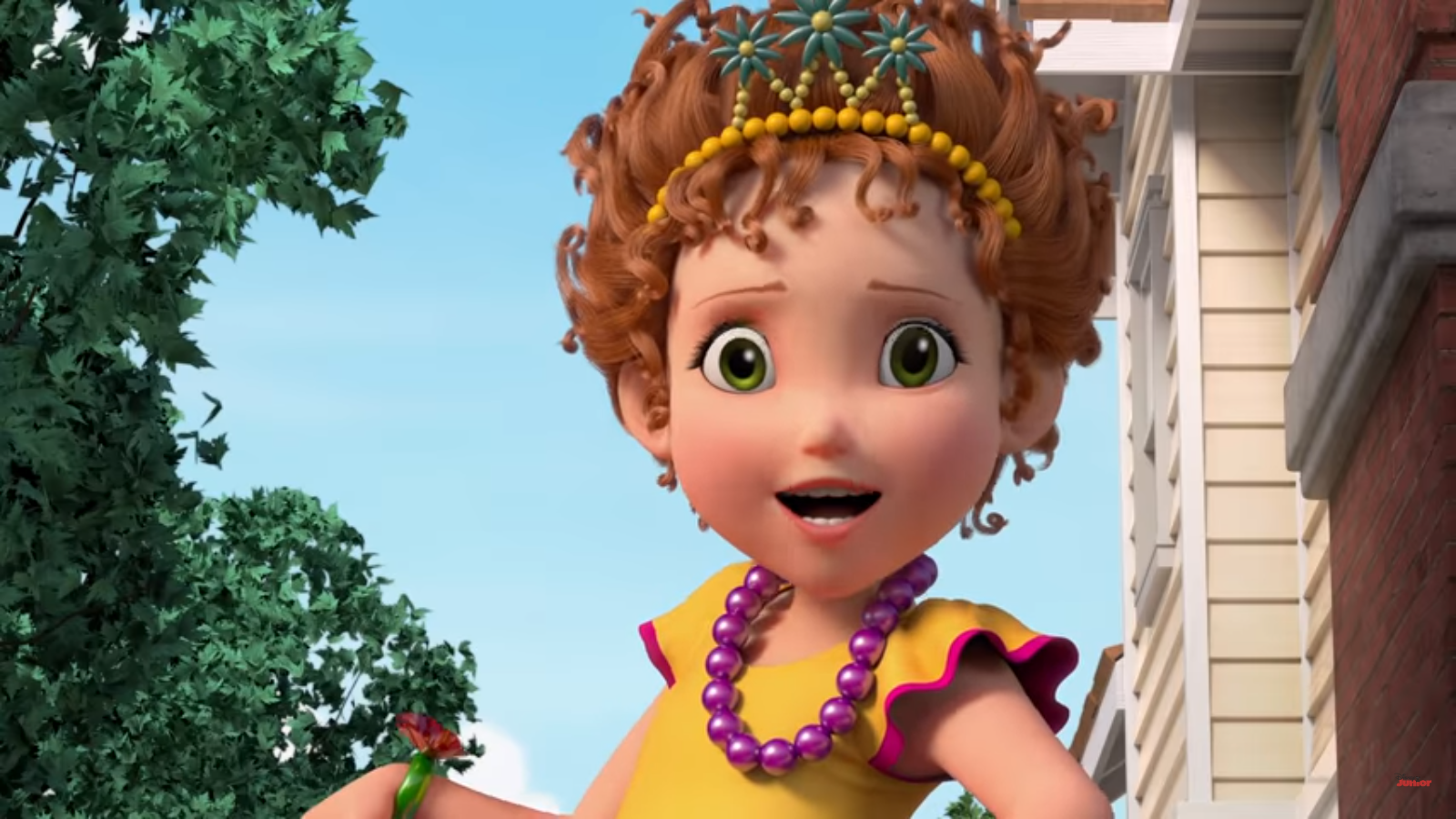
Since the series is hugely popular, it’s no surprise that Disney, which—like the Blob—seeks to absorb all into itself, would want a piece of this. Given how nasty Disney has become in recent days, it’s hard to imagine that they could treat Nancy with any respect; she seems like the kind of character Disney would work hard to pervert, and whose voice actress some Disney exec would work hard to rape on a casting couch. So when I saw that the first episode of Disney Junior’s Fancy Nancy series was free on YouTube, I immediately leapt to the simultaneous conclusions that I had to see it and that I would completely hate it.
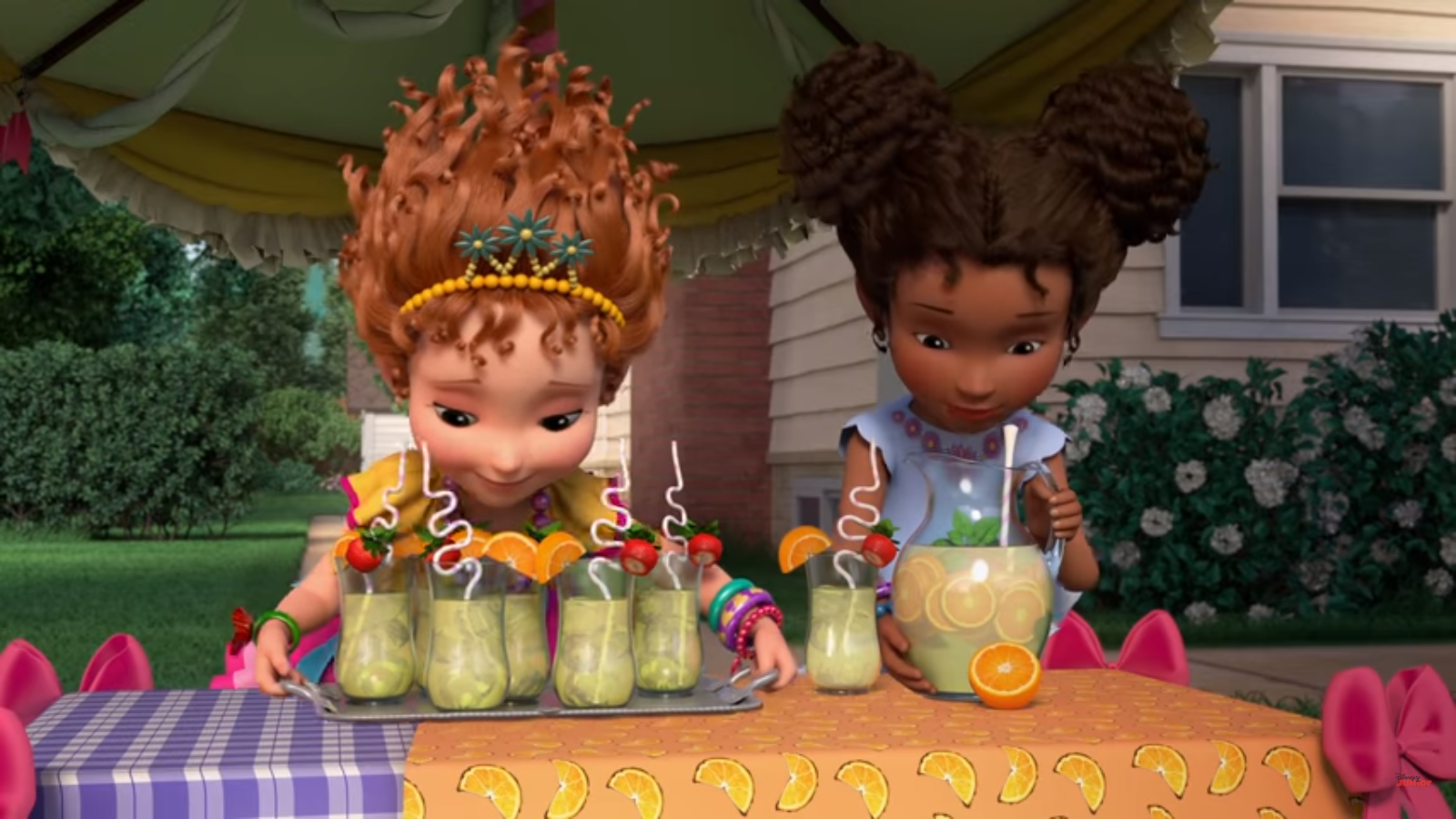
Unsurprisingly, my final opinion, after having actually sat through the free first episode, is not so resoundingly negative as my conclusion-jumping was. I don’t hate it—but I do hate a few things about it. It grew on me over the course of its twenty-three-minute run, though it failed to enamor me enough to want to spend money on any subsequent episodes. For that reason, I must make clear that my comments here refer to the first episode only. Therefore, the apologia for child molestation that Disney inserted into later episodes (probably) will be for someone else to discuss.
(P.S., I hate Disney, so take anything I say about that soulless demon-spawn of a mega-corp with a grain of salt.)
Anyway, having watched this first episode, I have to say … it’s not a train wreck on the level of Star Wars episode VIII, and I even laughed a few times. I at first thought that nobody at Evil Inc. could possibly understand Nancy, but there is apparently somebody there—somebody in the mail room, maybe—who still hasn’t sold his soul to Mephistopheles or kissed the anus of Baphomet. What I’m trying to say with this hyperbole is that it appears that somebody working on Fancy Nancy does not actively hate the Fancy Nancy franchise: unlike the Disney employees working on Star Wars or Marvel comics, somebody working on Nancy is actually able to take pleasure in the material he’s adapting and therefore treat it with a modicum of respect.
That’s a low bar, I admit, but the bar for Disney adaptations is pretty low right now.
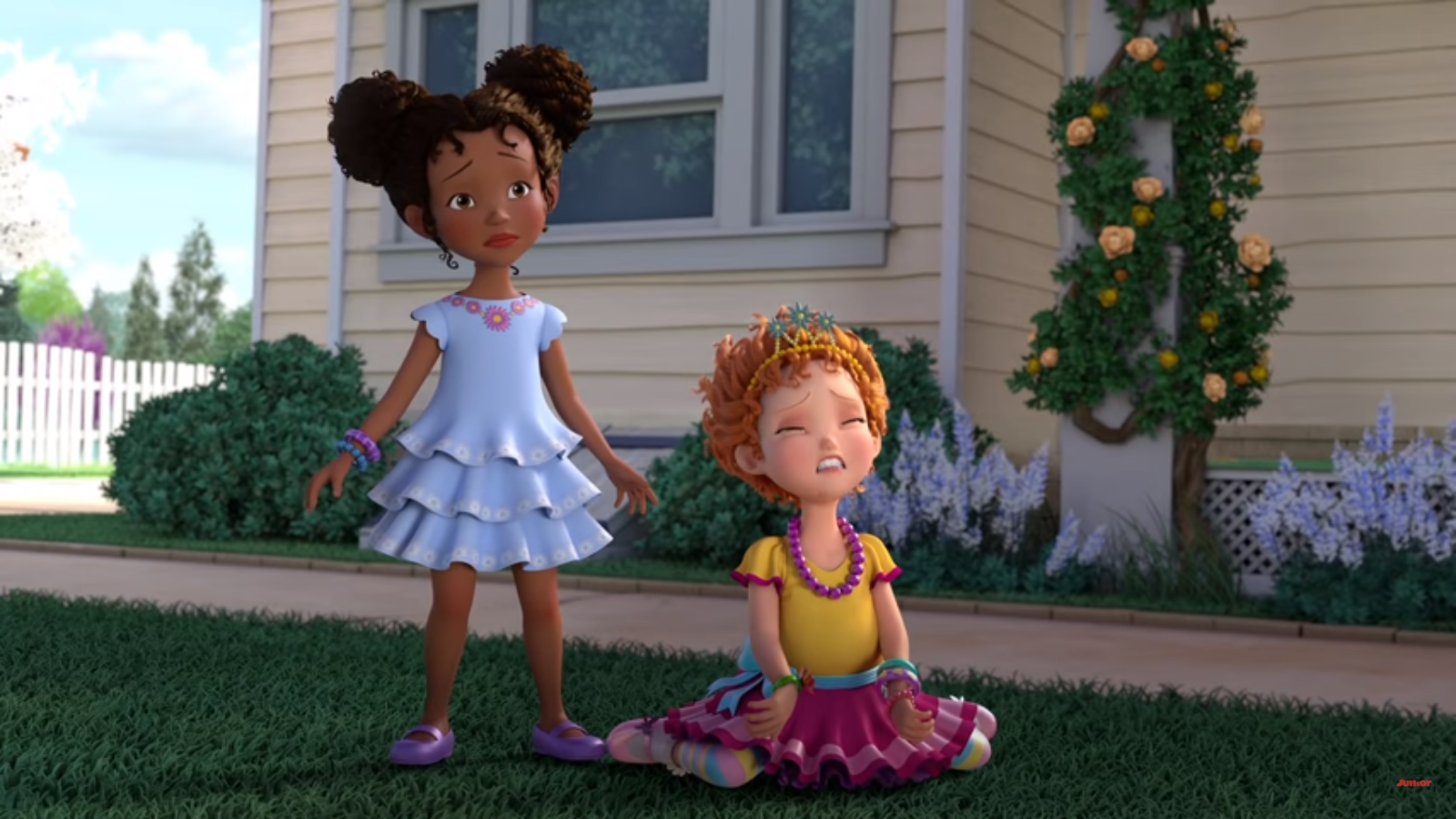
Anyway, first, to get the hate out of the way, I’ll say that the choice to make this show in CGI was not good. I realize it’s too much these days to ask animation studios to actually, you know, animate, but still. Much of the charm of the picture books is due to the whimsical art of Robin Preiss Glasser, and that’s a charm that this generic and soulless (as soulless as Disney itself) computer-generated dreck can’t imitate. I will allow that they did a mostly decent job with the character designs—Nancy is recognizable on sight, for example—but that doesn’t change the fact that these are character designs that just don’t translate well into 3D. Look at the thumbnail of the embedded video at the top of this post, and notice how Nancy’s exaggerated button nose results in some weird protuberance between her eyes. Her face is not meant for computer graphics.

Also, there’s her hair. In the picture books, Nancy was originally a brunette, but her hair was particolored because she filled it with purple mousse. Over time, she gradually morphed into a canonical redhead, though her hair was still depicted as a mix of red and orange and gold. In the cartoon, it’s straight-up red, and I suspect they did that because it would make it easier to manufacture the toys.
Although Nancy’s design is passable, I’m less pleased by some of the others. Mostly, I’m still trying to get over what they did to Nancy’s BFF Bree. I mean, what is with her hair?

And then there’s the voice acting. I won’t call it bad, exactly, but Nancy’s voice actress grates on me. That may just be me being picky.
There’s also the difficulty of translating Nancy into a new medium. Previous efforts, such as O’Connor’s own chapter book series, have demonstrated that Fancy Nancy is really best-suited for picture books written in first-person. Nancy is a little miss know-it-all, except without the expected snootiness, so she is always claiming to be “practically an expert” on any subject about which she has minimal knowledge, and she is constantly defining words for the reader. In the picture books, this works well, because the books serve as vocabulary builders without any disruption to the story. Once we move this to a third-person narrative or to television, however, Nancy’s word-definitions become intrusive and potentially obnoxious. In the cartoon, they’ve opted to handle them with rapid cutaway scenes in which Nancy turns directly to the camera and announces what a word means. I’m iffy on whether this was a good choice or not: basically, Nancy’s definitions are treated as punchlines, but the punchlines cease to be funny after we’ve already already heard them a few times.

As for the content of the episode itself, it’s … well … acceptable. The show starts with a misfire: Nancy is excited because her father and grandfather are building her a playhouse in the backyard—a playhouse that’s amazingly well-crafted; in fact, it looks like one of those prefab sheds. Already, a pedantic fan of the books is likely to cry foul: in the books, Nancy’s backyard “playhouse” is a makeshift hodgepodge she created herself out of blankets, ropes, and whatever odds and ends she could find, like a hat rack.
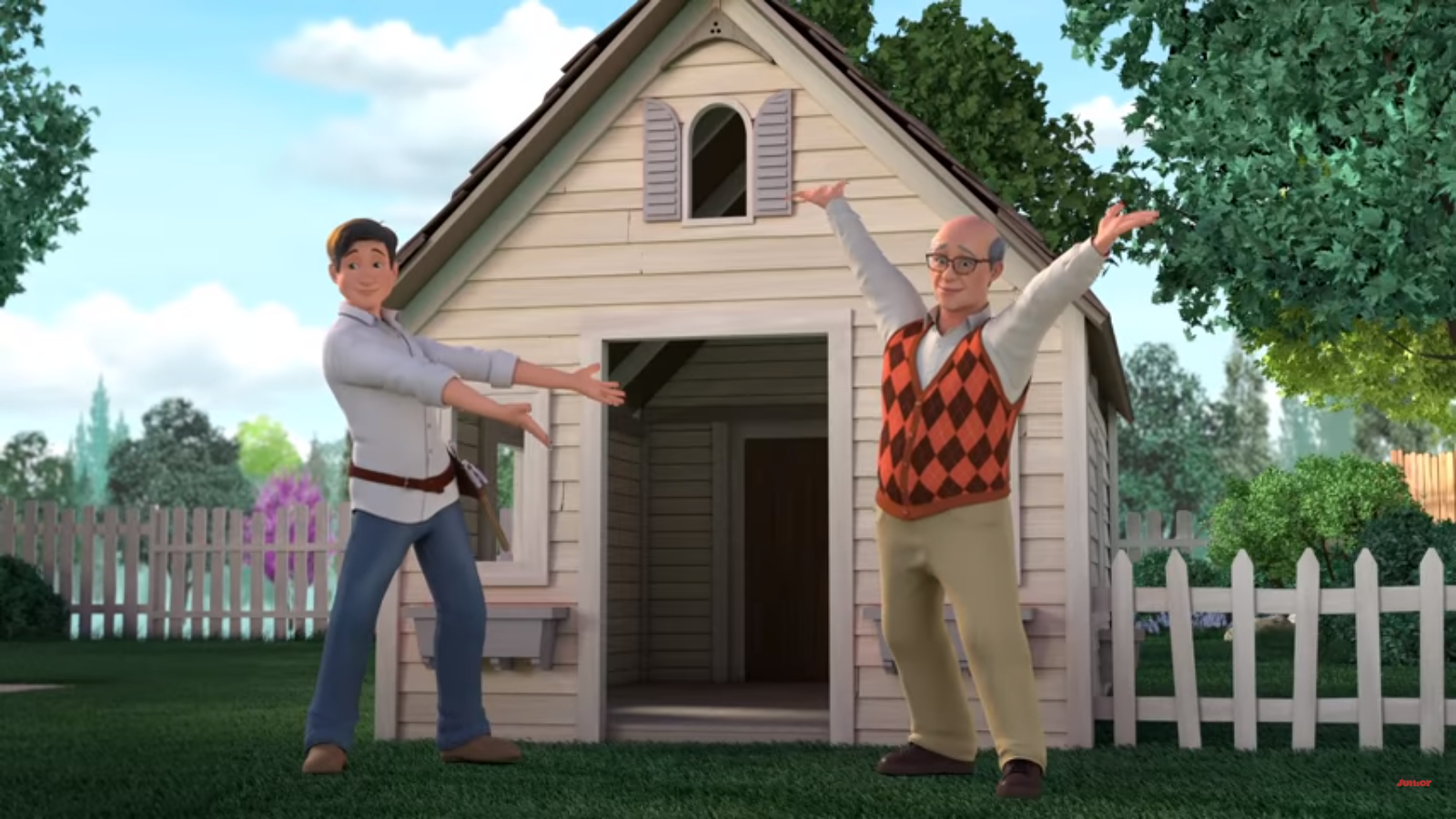
In spite of having much better digs than her storybook counterpart, Nancy is deeply disappointed when she sees the finished product that her parent and grandparent have worked so hard to produce, because it’s plain. Nancy comes across as spoiled and bratty here, but in spite of that slight misstep, this is a moment that really does feel Nancy-esque: the mournful reaction of oh no plain is very much in keeping with Nancy’s character.
What happens next is what warmed me up to this cartoon. Nancy pouts for only a second; after that, she launches into a musical number and recruits Bree, along with her little sister JoJo and Bree’s little brother Freddie, to spruce up the plain playhouse and make it fancy. They hang pictures on the wall, hang old curtains over the door, and make a chandelier out of a flashlight and Christmas lights to hang from the ceiling.

That last bit, especially, really captures the feel of what Fancy Nancy is. Nancy loves everything lavish and posh and elaborate, but in the end, being “fancy” is always about having the right attitude rather than about having the right possessions. Nancy’s life is one of ongoing dress-up play, and fanciness in her world ultimately comes down to imagination and elbow grease rather than riches. So I thought the makeshift chandelier was a nice touch: it’s exactly the kind of thing that the picture-book character would construct.

The story of the playhouse is only the first half of the episode. The second half is closely based on the original picture book, but is very different in character. In the picture book, Nancy decides that her family is too plain and offers to give them fanciness lessons; her parents gamely join in, throw on a ridiculous ensemble of clothes, and willingly embarrass themselves in public in order to entertain their eccentric daughter. It’s a heartfelt story of familial love.
In the episode, things go rather differently. Instead of trying to train her family in the art of fanciness, Nancy tries to train some of her school chums, who are less appreciative. Specifically, she attempts to teach the three kids who are least likely to understand the importance of fanciness: the tomboyish twins Rhonda and Wanda, who would rather be playing soccer, and the jokester Lionel, who would rather just be goofing around.
(And I totally ship Nancy with Lionel—but that’s a post for another time.)
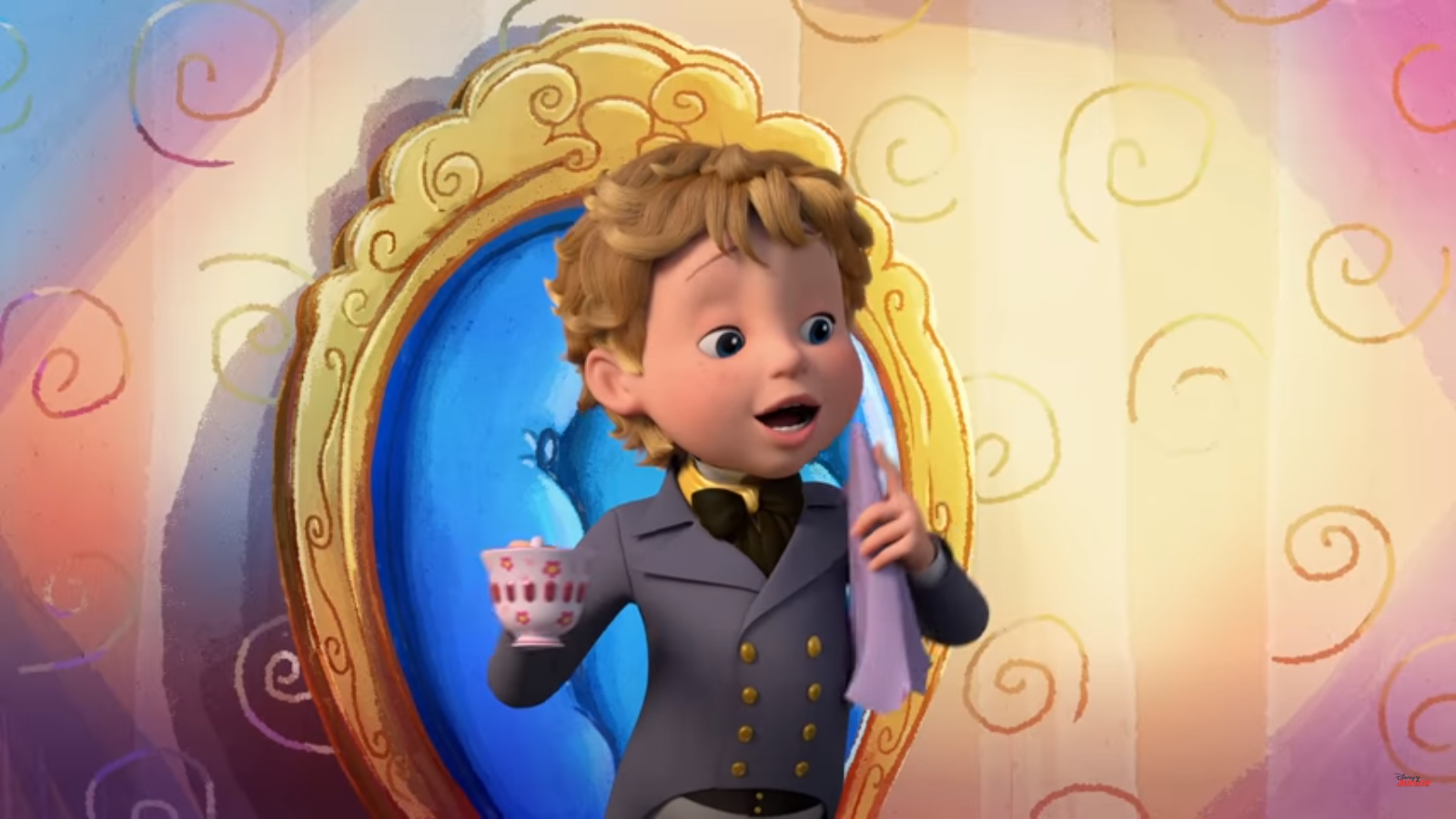
The kids act bored while Nancy attempts to teach them how to dress, how to walk with good posture, and how to eat with proper table manners. Recognizing their lack of appreciation, Nancy plays the tragedian and storms off in a huff, using a lawn chair as a fainting couch. Realizing they’ve hurt her feelings, the kids demonstrate to Nancy their own personal brands of “fancy,” and Nancy then realizes that everyone can be fancy “in his own way.”
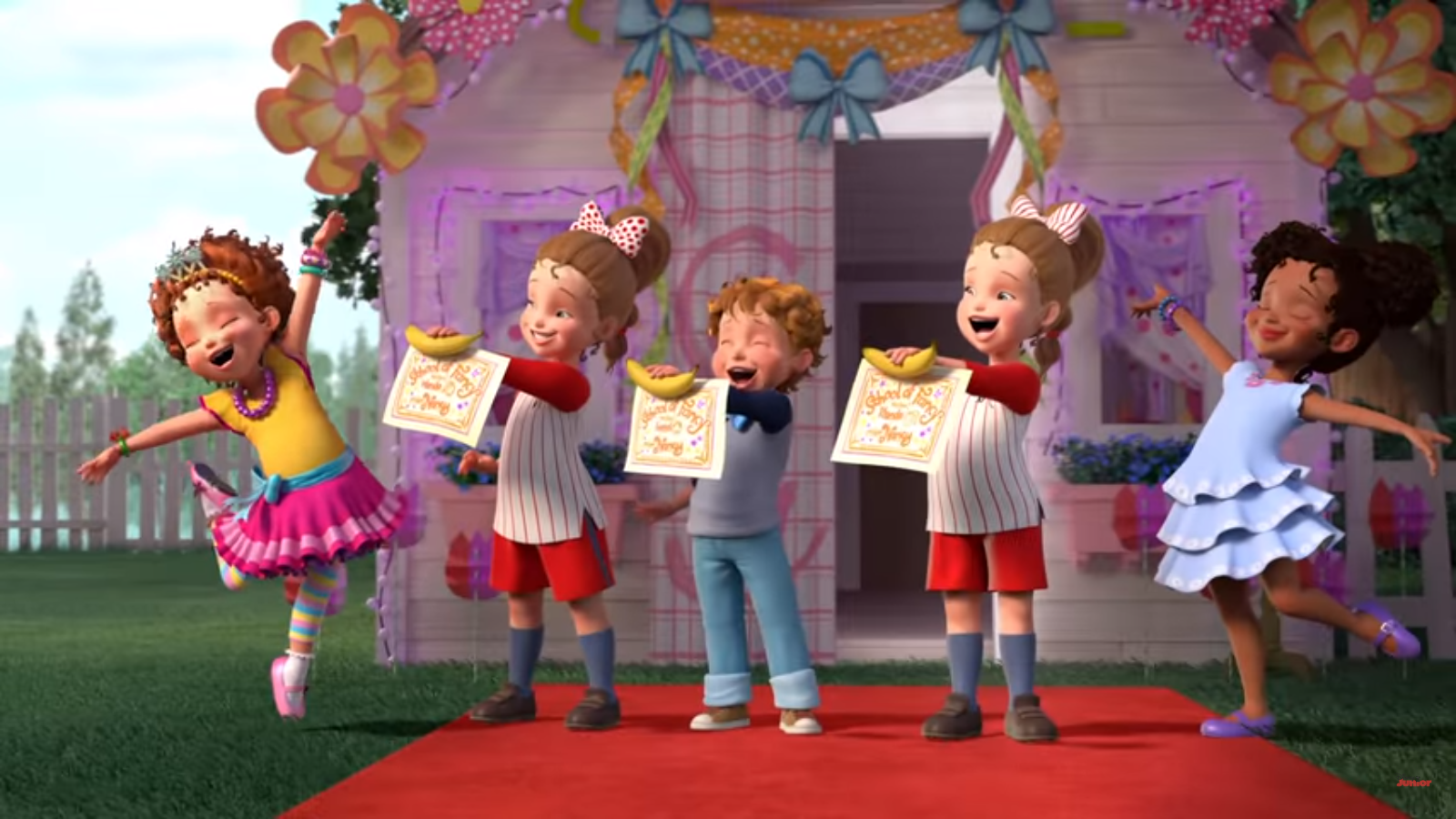
I was so-so about this second story. It is not exactly contrary to the all-inclusive message of the picture books, but that message has definitely been Disneyfied. In the books, anyone can be fancy if he is willing to cut loose and join in the fun, whereas in this episode, everyone is already fancy and need change nothing—and therefore the word fancy is effectively meaningless. That’s a subtle but important difference.
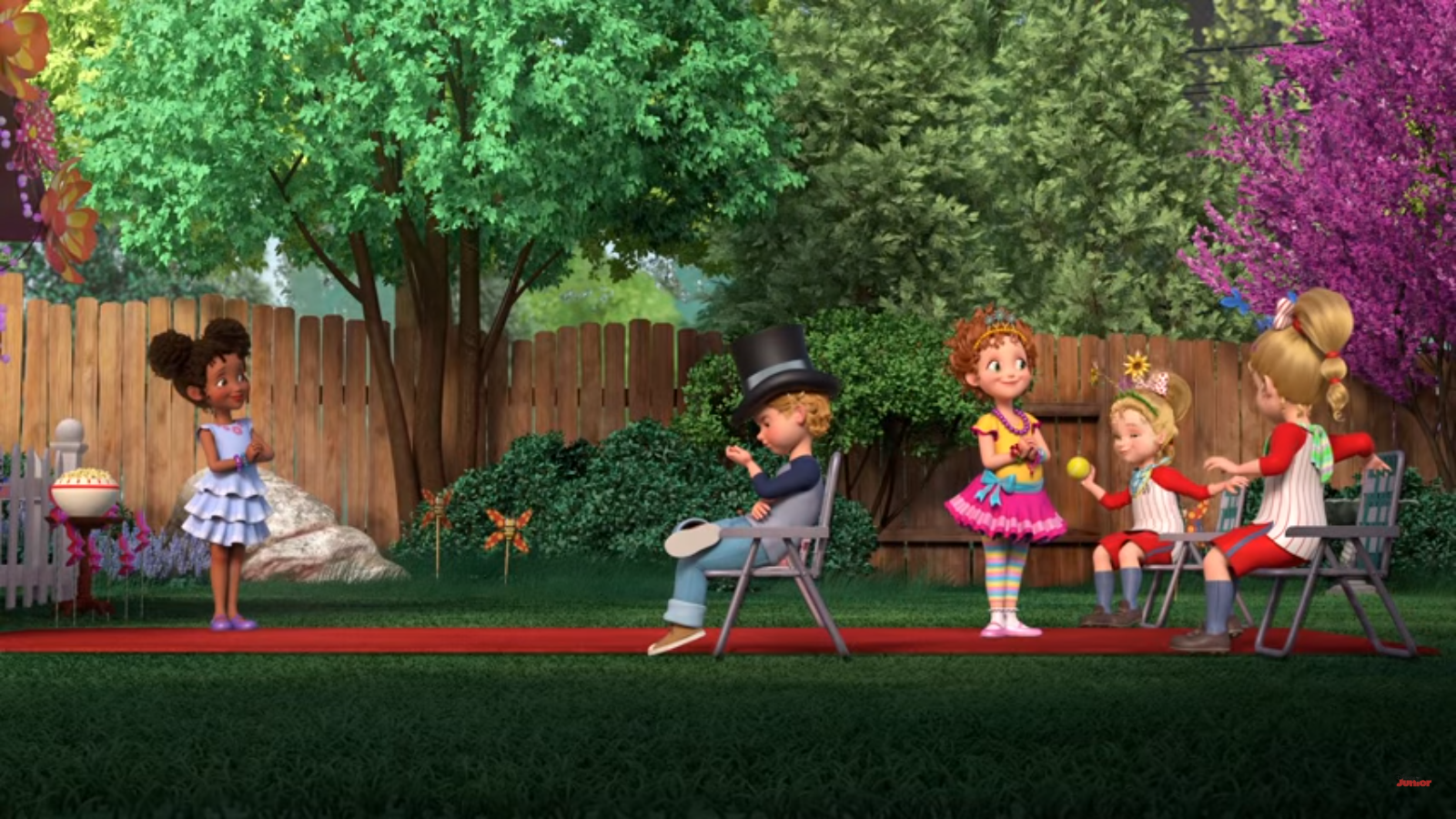
There are some details here that only a fan might pick up on, but that I like nonetheless. Moreso than in the first story, Nancy strikes a lot of melodramatic poses, arching her back and putting her hand to her forehead, pretending to faint, or constantly going up on her toes. Her exaggerated Shakespearean postures are a big part of what makes her so funny in the picture books, so I appreciate the attempt to duplicate that here, even if that duplication is inconsistent.
That being said, Nancy has a character that Disney has not (at least not in one episode) quite managed to capture. I speak here as a nitpicking fanboy, so take that for what it’s worth, but for a six-year-old from a picture book, Nancy is surprisingly complex. She is simultaneously uppity yet generous, straitlaced yet forgiving, conceited yet appreciative, and confident yet conscience-tortured. She’s a little bundle of paradoxes, but her disparate traits never quite contradict one another. I could go on at length with examples from the books, but that would be tedious to non-fans, so I will merely say that Disney has not quite (in one episode) got it right. In the cartoon, Fancy Nancy comes across as a bit of a brat. Granted, the picture-book Nancy is also a brat (she sulks with as much verve as she does everything else), but she is somehow a different sort of brat from the one Disney presents us with.
But that is, I admit, a minor complaint.
